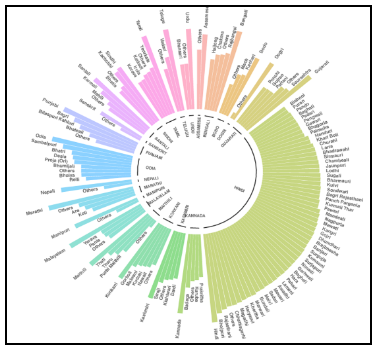Tuesday, 7th November 2023
State-Sponsored Cyber Attacks - Edukemy Current Affairs
In News
Apple Inc. has issued notifications to various individuals, including opposition leaders and journalists, alerting them to the presence of "State-Sponsored Attackers attempting remote compromises" on their iPhones.
About State Sponsored Terrorism and its impact on internal security
- State-sponsored cyber-attacks, also known as nation-state cyber-attacks, are orchestrated by governments or their agencies against other nations, organizations, or individuals.
- These attacks stand out due to their high level of sophistication, organization, and substantial resources, as they benefit from a nation-state's extensive capabilities and financial backing.
- Notable examples include the Stuxnet worm, alleged Russian interference in the 2016 U.S. presidential election, and the 2017 WannaCry ransomware attack tied to North Korea.
- Impacts on National Security:
- State-sponsored cyberattacks can result in the theft of sensitive national security information, military secrets, and critical infrastructure data, jeopardizing a nation's defines capabilities.
- Attacks on key industries and critical infrastructure can lead to significant economic losses. Disrupting energy or financial systems, for instance, can have severe economic consequences.
- These attacks can be used to manipulate public opinion, influence elections, and undermine political stability. Disinformation campaigns and hacking can have far-reaching political implications.
- State-sponsored cyberattacks can violate a nation's sovereignty and compromise its ability to govern and protect its citizens.
India has taken several initiatives to foster cybersecurity and address the growing challenges in the digital realm. Some key initiatives include:
- National Cyber Security Policy (NCSP)
- The Indian government launched the NCSP in 2013 to protect information and critical infrastructure from cyber threats. The policy aims to create a secure and resilient cyberspace environment.
- National Cyber Coordination Centre (NCCC)
- The NCCC is a government initiative that focuses on real-time monitoring and response to cyber threats.
- Indian Cyber Crime Coordination Centre (I4C)
- I4C was established to combat cybercrime by coordinating with various law enforcement agencies and providing technical support. It also acts as a central repository for cybercrime-related data.
- CERT-In (Indian Computer Emergency Response Team)
- CERT-In is the nodal agency for responding to cybersecurity incidents
- Public-Private Partnerships
- The Indian government has encouraged collaboration between the public and private sectors to strengthen cybersecurity
- Information Security Education and Awareness (ISEA) Project
- The ISEA project aims to create awareness about information security and build a skilled workforce in cybersecurity through training and education programs.
- National Cyber Security Awareness Program (NCSAP)
- This program focuses on creating cybersecurity awareness among various stakeholders, including government employees, businesses, and the general public.
- Data Protection Legislation
- India has been working on comprehensive data protection and privacy laws to enhance data security and protect individuals' privacy.
International Initiatives
- International Telecommunication Union (ITU)
- Budapest Convention on Cybercrime
The path ahead
- A necessity exists for the formulation and execution of all-encompassing national cybersecurity policies and strategies that encompass both defensive and offensive measures in the cyber realm.
- Allocate funding and resources to enhance the cybersecurity infrastructure, encompassing cutting-edge intrusion detection systems, secure networks, and cybersecurity training for government entities.
- Engage in cooperative efforts with other countries and international organizations to exchange threat intelligence and synchronize responses to state-sponsored threats.
|
UPSC Previous Year Questions Prelims (2020) Q. In India, under cyber insurance for individuals, which of the following benefits are generally covered, in addition to payment for the loss of funds and other benefits?
Select the correct answer using the code given below: (a) 1, 2 and 4 only Ans: (b) Prelims (2017) Q.2 In India, it is legally mandatory for which of the following to report on cyber security incidents?
Select the correct answer using the code given below: (a) 1 only Ans: (d) Mains (2022) Q. What are the different elements of cyber security? Keeping in view the challenges in cyber security, examine the extent to which India has successfully developed a comprehensive National Cyber Security Strategy. |
Source: IE
India’s Deep Ocean Mission - Edukemy Current Affairs
GS-3 Scientific Innovations & Discoveries, Water Resources, Growth & Development GS – 2 Government Policies & Interventions
In News
India is embarking on a groundbreaking Deep Ocean Mission to explore and harness the largely uncharted depths of the ocean, offering substantial potential for scientific and economic benefits.
About India’s Deep Ocean Mission
- The Deep Ocean Mission (DOM) is a Ministry of Earth Sciences initiative with the objective of advancing technologies and capabilities for deep-sea exploration
- It consists of multiple key pillars such as
- deep-sea mining
- ocean climate change advisory services
- biodiversity exploration
- mineral survey
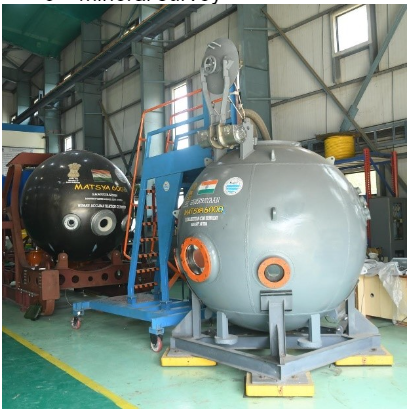
- A significant milestone in the DOM's objectives is the launch of India's flagship deep ocean mission, Samudrayaan, which involves a crewed expedition to reach a depth of 6,000 meters using the Matsya6000 deep-ocean submersible designed to withstand extreme pressures.
- Additionally, the successful deep-sea trials of 'Varaha,' an underwater mining system, at a depth of 5,270 meters represent a significant advancement in deep-sea resource exploration, particularly for valuable resources like polymetallic nodules and sulphides found at these depths.
Key Hurdles in the Exploration of the Deep Ocean
- Deep-sea exploration faces considerable challenges related to the immense oceanic pressure, requiring equipment with robust designs and materials to operate effectively in these harsh conditions.
- Landing heavy vehicles on the soft, muddy ocean floor is particularly difficult, and extracting materials demands substantial power.
- Furthermore, the limitations of remotely operated vehicles in the absence of electromagnetic wave propagation, coupled with limited visibility due to the limited penetration of natural light underwater, add to the complexity.
- Additionally, factors like temperature fluctuations, corrosion, and salinity create compounded challenges that necessitate comprehensive solutions.
Way ahead
- Drawing from Nature for Innovation
- Seek inspiration from the natural world, particularly marine life, for creative engineering solutions.
- Biomimetic approaches may lead to the development of structures and materials ideally suited to deep-sea conditions, enhancing their durability and adaptability.
- Advancing Sustainable Energy Sources
- Make strides in sustainable energy generation to sustain prolonged missions.
- This may encompass innovations in energy-harvesting technologies like harnessing ocean thermal energy through temperature differentials in the ocean, as well as exploring tidal and wave energy potential.
- Integrating Multiple Sensor Technologies
- Combine various sensor technologies to compensate for the limited visibility in the deep ocean.
- This could involve merging sonar, lidar, and other imaging methods to form a comprehensive view of the deep-sea environment, facilitating better navigation and exploration.
- Addressing Environmental Impact
- Ensure that deep-sea exploration endeavours have minimal ecological impact.
- Establish international regulations and policies governing deep-sea exploration to promote responsible and ethical practices, striking a balance between scientific progress and environmental preservation.
|
UPSC Previous Year Questions Prelims (2022) With reference to the United Nations Convention on the Law of Sea, consider the following statements:
Which of the statements given above are correct? (a) 1 and 2 only Ans: (d) Prelims (2021) Q. What is blue carbon? (2021) (a) Carbon captured by oceans and coastal ecosystems Ans: (a) |
Source: TH
3rd Int'l Convention: Sustainable Trade & Standards - QCI
In News
The Quality Council of India (QCI), held the 3rd International Convention on Sustainable Trade and Standards (ICSTS) in New Delhi.
The noteworthy features of ICSTS
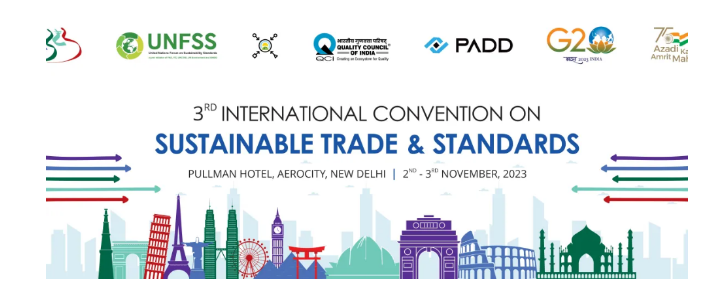
- QCI and ARSO signed an agreement to boost trade and harmonize standards, especially Voluntary Sustainability Standards.
- India's ONDC initiative in digital commerce was highlighted for its global standards alignment.
- QCI is responsible for assessing the digital readiness of ONDC Network's Seller App.
- ICSTS facilitated a comparison of IndG.AP. and GLOBALG.A.P. standards to align Indian agriculture with global norms, benefiting about 12,000 farmers.
About Quality Council of India
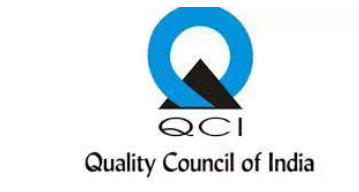
- QCI is a non-profit organization registered under the Societies Registration Act XXI of 1860.
- It was jointly established by the Indian Government and leading industry associations: ASSOCHAM, CII, and FICCI, in 1997.
- QCI's primary purpose is to promote and improve quality standards across diverse sectors in India.
- It plays a key role in accreditation, certification, and quality enhancement within India.
- DPIIT, part of the Ministry of Commerce and Industry, serves as the central point for quality-related matters and supports QCI in implementing government decisions.
- QCI is governed by a Council consisting of 39 members, including the Chairperson and Secretary General, with equal representation from the government, industry, and other stakeholders.
|
UPSC Previous Year Questions Prelims (2017) Q. With reference to ‘Quality Council of India (QCI)’, consider the following statements:
Which of the above statements is/are correct? (a) 1 only Ans: (c) |
Source: PIB
Sixth Assembly of International Solar Alliance
In News
The Sixth Assembly of the International Solar Alliance (ISA) was recently held at Bharat Mandapam in New Delhi.
The key focal points of the Assembly

- ISA Assembly discussed a strategy prioritizing energy access before transitioning to renewables, following the "access first and then transition" philosophy.
- Viability Gap Funding (VGF) for projects increased from 10% to a range of 10% to 35% to attract more investments, especially in African nations.
- During the assembly, four ISA-supported projects were inaugurated, covering various countries: Malawi Parliament solarization, Fiji rural healthcare centres’ solarization, Seychelles solar-powered cold storage installation, and Kiribati school solarization.
- India reiterated its commitment to make solar energy the primary source, aiming for renewables to supply 65% of global electricity by 2030 and decarbonize 90% of the power sector by 2050.
About International Solar Alliance (ISA)
- The International Solar Alliance (ISA) is a collaborative platform aimed at boosting the use of solar energy technologies to ensure energy access, security, and transition.
- Initially established during the 21st Conference of Parties (COP21) in 2015 as a partnership between India and France.
- The framework Agreement was amended in 2020, making all UN member states eligible to join ISA.
- Presently, 116 countries are signatories, with 94 completing ratifications to become full members.
- ISA follows its 'Towards 1000' strategy, targeting $1,000 billion in solar energy investments by 2030, delivering energy access to 1 billion people, and installing 1,000 GW of solar energy capacity, thereby reducing global solar emissions by 1 billion tonnes of CO2 annually.
- The Assembly serves as the highest decision-making body for ISA, with representation from each Member Country, responsible for implementing the ISA's Framework Agreement and coordinated actions.
|
UPSC Previous Year Questions Prelims (2016) Q. Consider the following statements:
Which of the statements given above is/are correct? (a) 1 only Ans: (a) |
Source: PIB
Haemoglobin in Chondrocytes - Edukemy Current Affairs
In News
In a recent fortuitous finding published in Nature, it was revealed that chondrocytes, not only produce haemoglobin but also depend on it for their survival, challenging that haemoglobin is exclusively associated with red blood cells (RBCs).
About Haemoglobin Bodies or ‘Hedy’?

- In 2017, a Chinese pathologist discovered spherical structures in the cartilaginous tissue at the ends of certain long bones that resembled RBCs and contained haemoglobin.
- These structures, known as 'haemoglobin bodies' or 'Hedy,' were located within chondrocytes in the cartilage, forming through a phase separation process similar to oil separating from water.
- The discovery of functional haemoglobin in cartilage suggests its potential role in certain joint diseases linked to defects in chondrocytes.
- In 2018, researchers identified a distinct group of stem cells in the growth plate, with the possibility that haemoglobin in the growth plate could influence the fate of these stem cells.
Importance of Haemoglobin in Chondrocytes
- Haemoglobin is vital for chondrocytes' survival, and its absence leads to embryonic lethality in mice.
- It plays a crucial role in oxygen transport and storage within chondrocytes.
- Haemoglobin enables chondrocytes to cope with low oxygen levels by transporting and releasing oxygen when needed.
- Without haemoglobin, chondrocytes experience hypoxic stress and impaired functionality.
|
UPSC Previous Year Questions Prelims (2012) Q. With reference to ‘stem cells’, frequently in the news, which of the following statements is/are correct?
Select the correct answer using the codes given below: (a) 1 and 2 only Ans: (b) Mains (2021) Q. What are the research and developmental achievements in applied biotechnology? How will these achievements help to uplift the poorer sections of the society? |
Source: TH
S-400 Missile and Project Kusha
In News
In order to enhance its defence capabilities, the Indian Air Force (IAF) has positioned three S-400 Triumf air defence missile squadrons along its borders with China and Pakistan.
About S-400 Triumf air defence missile and its significance for India
- S-400 Triumf is a mobile SAM system developed by Russia, capable of intercepting and destroying various aerial targets like aircraft, drones, cruise missiles, and ballistic missiles.
- It offers a range of up to 400 km, altitude up to 30 km, and can engage up to 36 targets simultaneously with four missile types.
- Regarded as the most potent long-range SAM system globally, surpassing the US-developed THAAD.
- India procured S-400 missiles to bolster its air defence against modernized air forces and missile arsenals of China and Pakistan.
- India faces a dual threat from these neighbours, making the acquisition crucial.
- Vital for countering China's expanding influence in the Indian Ocean Region, where it's building ports and bases.
- India seeks strategic autonomy and diversified defence partnerships amid global order uncertainties.
About Project Kusha
- Project Kusha, led by DRDO, is India's ambitious endeavour to create a long-range air defence system by 2028-29.
- This system aims to detect and neutralize enemy threats like cruise missiles, stealth fighter jets, and drones from long distances.
- It will include three interceptor missile types with ranges of 150 km, 250 km, and 350 km, as well as advanced long-range surveillance and fire control radars.
- Project Kusha is anticipated to rival the effectiveness of Russia's S-400 and Israel's Iron Dome systems.
About Iron Dome of Israel
- Israel's defence system includes radar and interceptor missiles to track and neutralize rockets and missiles aimed at Israeli targets.
- Developed by state-run Rafael Advanced Défense Systems and Israel Aerospace Industries, it became operational in 2011.
- Effective against various threats, including rockets, artillery, mortars, aircraft, helicopters, and UAVs.
- Covers a range of nearly 70 km and comprises three key components: Detection and Tracking radar, Battle Management and Weapons Control, and Missile Launcher.
|
UPSC Previous Year Questions Prelims (2018) Q1. What is “Terminal High Altitude Area Défense (THAAD)”, sometimes seen in the news? (a) An Israeli radar system Ans: (c) Prelims (2014) Q2. With reference to Agni-IV Missile, which of the following statements is/are correct?
Select the correct answer using the code given below: (a) 1 only Ans: (a)
Mains (2020) Q. What is the significance of Indo-US defence deals over Indo-Russian defence deals? Discuss with reference to stability in the Indo-Pacific region. |
Source: LM
Global Declaration for River Dolphins
In News
A historic agreement was signed in Bogota, Colombia, where 11 Asian and South American nations joined forces to protect the planet's six remaining river dolphin species and prevent their extinction.
About Global Declaration for River Dolphins
- The Global Declaration for River Dolphins seeks to reverse the decline of all river dolphin species and protect the most vulnerable populations.
- Key measures include eliminating gillnets, reducing pollution, increasing research, and creating protected areas for river dolphins.
- Adopting countries: Bangladesh, Bolivia, Brazil, Cambodia, Colombia, Ecuador, India, Nepal, Pakistan, Peru, and Venezuela, along with Indonesian regional representation for the Mahakam River.
- Eight foundational pillars involve establishing protected areas, improving site management, expanding research, engaging local communities, ending unsustainable fishing, enhancing water quality, promoting World River Dolphin Day (October 24), and boosting resource allocation and partnerships.
About River Dolphins[Text Wrapping Break]
- River dolphins are freshwater cetaceans found in Asian and South American river systems.
- The world has six surviving river dolphin species: Amazon, Ganges, Indus, Irrawaddy, Tucuxi, and the Yangtze finless porpoise.
- The Chinese River dolphin was considered 'probably extinct' in 2007.
- Yangtze finless porpoises are classified as Critically Endangered according to the IUCN Red List.
- Amazon, Ganges, Indus, Irrawaddy, and Tucuxi dolphins are labelled as Endangered.
Threats to River dolphins
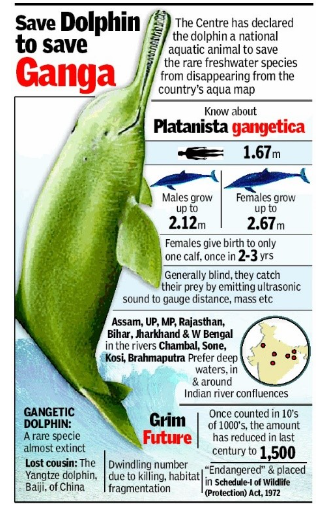
- River dolphins face various threats, including unsustainable fishing, hydropower dams, industrial pollution, agriculture, mining, and habitat loss.
- Climate change, exemplified by the death of 150+ Amazon River dolphins in drought-stricken Lake Tefe, poses a severe threat.
- Conservation efforts have shown success in populated river basins; the Indus River dolphin population in Pakistan doubled through collaborative efforts.
- Protective measures led to a 23% increase in Yangtze finless porpoise numbers, and the World Wildlife Fund's electronic pinger project rescued 80 dolphins in Indonesia's Mahakam River from gill net entanglement.
|
UPSC Previous Year Questions Prelims (2015) Q. Which one of the following is the national aquatic animal of India? (a) Saltwater crocodile Ans: (c) |
Source: WWF
CO2 to CO Conversion Technology
In News
IIT Bombay's National Centre of Excellence in Carbon Capture and Utilisation (NCoE-CCU) has created an innovative technology for the conversion of carbon dioxide (CO2) into carbon monoxide (CO)
What Is the Working Mechanism of the CO2 to CO Conversion Technology?
- The CO2 to CO conversion technology operates via electrocatalysis, avoiding the need for high temperatures and equivalent hydrogen levels, functioning at ambient temperatures (25-40°C) in the presence of water.
- Renewable energy sources like solar panels and windmills can directly power this carbon-neutral process, making it highly energy-efficient and eco-friendly.
- Significantly, CO is crucial in the steel industry for converting iron ores to metallic iron and in the form of syn gas.
- Traditional CO production from coke/coal partial oxidation leads to substantial CO2 emissions.
- The new technology offers a circular economy opportunity, reducing carbon footprint and production costs in steel manufacturing.
- Electrocatalytic processes involve direct electron transfer between electrodes and reactants, promoting environmental sustainability and cost-effectiveness.
- Carbon monoxide (CO) is a colourless, doorless gas produced by incomplete hydrocarbon combustion, such as burning fossil fuels and wood.
- It can displace oxygen from blood haemoglobin and is toxic to humans.
- In the atmosphere, CO is short-lived and contributes to ground-level ozone formation.
|
UPSC Previous Year Questions Prelims (2019) Q. Consider the following:
Which of the above are released into atmosphere due to the burning of crop/biomass residue? (a) 1 and 2 only Ans: (d) |
Source: PIB
India First International Cruise Liner
In News
Costa Serena, India's inaugural international cruise liner, was inaugurated by Shri Sarbananda Sonowal, marking a transformative phase in the world of cruising and tourism.
Government has proactively advocated for cruise tourism, implementing a range of strategic measures to rejuvenate the cruise industry:
- Advancing the development of contemporary cruise terminals with enhanced amenities for passengers.
- Providing conditional IGST exemptions for foreign cruise operators, alleviating financial constraints.
- Establishing uniform Standard Operating Procedures (SOPs) for Customs, Immigration, CISF, and Ports, streamlining operational processes.
- Eliminating ousting charges, offering concessional rates, and volume discounts for cruise ships, fostering growth.
- Removing cabotage restrictions for foreign cruise vessels, enticing international participation in Indian waters.
Future Prospects
- Sagarmala Programme explores cruise and lighthouse tourism projects, enhancing maritime states' tourism.
- Maritime India Vision 2030 aims to position India as the leading cruise hub in the Asia Pacific.
- Nationwide establishment of cutting-edge cruise terminals as part of infrastructure development.
- Introduction of standardized procedures and e-visa facilities.
- Ambitious goal: Attracting 18 lakh cruise passengers by 2030, compared to the current 4.72 lakhs.
- Maritime Amritkaal Vision 2047 envisions 25 operational cruise terminals and an estimated annual passenger count of 5 million by 2047.
- Future plans include launching a comprehensive cruise tourism policy aligning with international standards, addressing key aspects like GST, taxation, and customs duties.
Source: AIR News
Galapagos Island - Edukemy Current Affairs
In News
The near Galápagos Islands boast untouched coral reefs, unveiling a realm teeming with abundant marine biodiversity.
About Galapagos Island
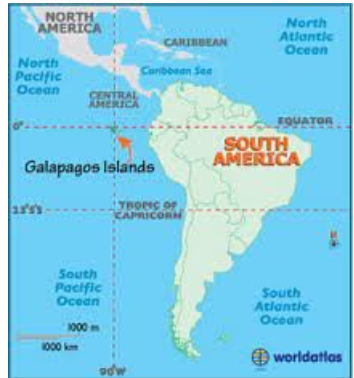
- The Galapagos Islands, part of Ecuador, cover an extensive area of almost 60,000 sq. km in the Pacific Ocean, situated about 1,000 km from the South American continent.
- Protected status: Designated a wildlife sanctuary in 1935, later becoming the Galapagos National Park in 1959. In 1978, they earned UNESCO's first World Heritage Site recognition.
- Rich biodiversity: Home to diverse aquatic species like manta rays, sharks, marine iguanas, waved albatrosses, and critically endangered species like the Galápagos penguin, fur seal, sea lion, and iconic giant tortoises.
- Scientific significance: Charles Darwin conducted crucial observations in 1835, shaping his theory of evolution and describing the islands as a unique "world in itself."
- Resilient corals: The waters off the west coast of Ecuador, where the islands are located, stand out for the corals' ability to resist bleaching and death.
About Coral Reefs
- Coral reefs are diverse marine ecosystems formed by the accumulation of calcium carbonate secretions from corals.
- They provide habitat and protection for numerous marine species, making them one of the world's most biodiverse environments.
- Coral reefs offer essential ecosystem services, such as fisheries, tourism, and shoreline protection.
- Climate Change Threat: Rising sea temperatures and ocean acidification due to climate change pose a severe threat to coral reefs, leading to coral bleaching and degradation.
- Conservation Efforts: Various organizations and governments work to protect and restore coral reefs through initiatives like marine protected areas and coral restoration projects.
- Economic Importance: Coral reefs generate billions of dollars in revenue through tourism, fisheries, and related industries, supporting coastal communities.
- Scientific Research: Researchers study coral reefs to better understand marine life, biodiversity, and the impacts of climate change.
- Fragile Ecosystems: Coral reefs are sensitive to environmental changes and require preservation efforts to ensure their survival.
Source: TWC
Formaldehyde CH2O - Edukemy Current Affairs
In News
The FDA intends to prohibit the use of hair straighteners containing formaldehyde.
About Formaldehyde
- Formaldehyde, also known as methanal, is a naturally occurring organic compound with the formula CH2O.
- In its pure form, it's a colourless gas with a pungent smell, but it spontaneously polymerizes into paraformaldehyde, so it's typically stored as a solution known as formalin.
- As the simplest aldehyde (R−CHO), its name relates to its similarity to formic acid.
- Formaldehyde serves as a crucial precursor for various materials and chemical compounds.
- It is primarily used in the production of industrial resins, such as those used in particle board and coatings.
Source: NYT
Sterling Engine - Edukemy Current Affairs
In News
Scientists from IISc and the Jawaharlal Nehru Centre for Advanced Scientific Research have created an engine that eliminates heat loss, with their findings published in the journal 'Nature Communications' this week.
About Sterling Engine
- A Stirling engine operates on a micro scale using a laser beam as fuel instead of gas.
- It functions like a piston with a single particle.
- Electric fields can be applied to this micro engine to significantly reduce heat loss, resulting in an efficiency of nearly 95 percent.
- It's designed as a 'Stirling' engine, which compresses and expands air or gas between various temperature ranges periodically, converting heat energy into mechanical work.
- This innovative engine design has the potential to achieve high power and high efficiency simultaneously
Significance
- The significance of the Stirling engine lies in its ability to achieve both high power and high efficiency simultaneously, which was previously considered challenging.
- It operates on a micro scale, making it suitable for various applications where size and efficiency are critical.
- By drastically reducing heat loss, it has the potential to be more energy-efficient and environmentally friendly.
- This innovative engine design could find applications in various fields, including transportation, energy generation, and microengineering, offering improved performance and reduced environmental impact.
Source: TP
UN ineffective in putting an end to conflicts and wars?
Context:
This editorial is based on the article titled " Is the United Nations toothless in ending wars? " Published in The Hindu on 03/11/2023. It discusses the UN's effectiveness in addressing the Israel-Hamas conflict and the broader security challenges in the contemporary international order.
UN's Role in Maintaining International Peace and Security
- UN upholds international peace through various means, in accordance with the UN Charter Chapter VII.
- UN Security Council (UNSC) addresses threats to peace and can use force when necessary.
- UN deploys missions with personnel from member states to monitor ceasefires and support peace agreements.
- UN provides a platform for negotiation and mediation to resolve conflicts peacefully.
- Sanctions: UNSC can impose sanctions like trade restrictions against entities endangering peace.
- UN proactively identifies potential conflicts and works to prevent their escalation.
- Conflict Prevention: UN addresses root causes like poverty and human rights abuses to prevent conflicts.
- UN provides aid to conflict-affected populations, saving lives and alleviating suffering.
- UN promotes adherence to international law and treaties that govern state behaviour.
- UN reduces the proliferation of weapons of mass destruction and encourages disarmament efforts.
UN's Achievements in Preserving International Peace and Security
- The UN's establishment after WWII aimed to prevent global conflicts, and the absence of a third world war is a significant success.
- The International Atomic Energy Agency (IAEA) has effectively inspected nuclear activities, helping ensure the peaceful use of nuclear material.
- UN treaties form the legal basis for disarmament efforts, including conventions like the Chemical Weapons Convention and the Arms Trade Treaty.
- UN conducts peacekeeping missions worldwide, particularly in Africa, to prevent and resolve regional conflicts.
- The UN has successfully mediated in conflicts between countries, such as the 1962 Cuban Missile Crisis.
- UN agencies like UNDP, UNHCR, UNICEF, WFP, and UNFPA play vital roles in delivering aid to conflict-affected populations.
Evidences of Limitations of UN in Maintaining International Peace and Security
- Israeli-Palestinian Conflict (1948-Now)
- Civil War in Somalia and South Sudan (1991-Now)
- Darfur Conflict in Sudan (2003-Now)
- Iraq Invasion (2003-2011)
- Syrian Civil War (2011-Now)
- Yemen Civil War (2014-Now)
- Rohingya Crisis, Myanmar (2017-Now)
Essential Reforms for the United Nations
- Revamp UNSC Structure and Functionality
- Enlarge the number of permanent members.
- Introduce limitations on veto use in cases of mass atrocities and implement collective veto consultations.
- Ensure sufficient resources for the Department of Political and Peacebuilding Affairs (DPPA) and the Department of Peace Operations (DPO).
- Establish a unified political-operational structure for better coordination.
- Strengthen Conflict Prevention Mechanisms
- Improve intelligence gathering and establish regional early warning centres.
- Expand the role of special envoys and invest in diplomatic efforts.
- Bolster Partnerships
- Enhance connections with non-governmental organizations (NGOs) and promote grassroots involvement.
- Leverage resources and expertise from the private sector, aligning business interests with peace and security objectives.
- Strengthen ties with regional entities like the African Union (AU) and the European Union (EU) and engage in joint peacekeeping initiatives.
|
UPSC Previous Year Questions Prelims (2009) Q. The Security Council of UN consists of 5 permanent members, and the remaining 10 members are elected by the General Assembly for a term of (a) 1 year Ans: (b) Mains (2015) Q. Discuss the impediments India is facing in its pursuit of a permanent seat in UN Security Council. |
Source: TH
Share the article
Edukemy’s Current Affairs Quiz is published with multiple choice questions for UPSC exams
MCQ
Get Latest Updates on Offers, Event dates, and free Mentorship sessions.

Get in touch with our Expert Academic Counsellors 👋
FAQs
UPSC Daily Current Affairs focuses on learning current events on a daily basis. An aspirant needs to study regular and updated information about current events, news, and relevant topics that are important for UPSC aspirants. It covers national and international affairs, government policies, socio-economic issues, science and technology advancements, and more.
UPSC Daily Current Affairs provides aspirants with a concise and comprehensive overview of the latest happenings and developments across various fields. It helps aspirants stay updated with current affairs and provides them with valuable insights and analysis, which are essential for answering questions in the UPSC examinations. It enhances their knowledge, analytical skills, and ability to connect current affairs with the UPSC syllabus.
UPSC Daily Current Affairs covers a wide range of topics, including politics, economics, science and technology, environment, social issues, governance, international relations, and more. It offers news summaries, in-depth analyses, editorials, opinion pieces, and relevant study materials. It also provides practice questions and quizzes to help aspirants test their understanding of current affairs.
Edukemy's UPSC Daily Current Affairs can be accessed through:
- UPSC Daily Current Affairs can be accessed through Current Affairs tab at the top of the Main Page of Edukemy.
- Edukemy Mobile app: The Daily Current Affairs can also be access through Edukemy Mobile App.
- Social media: Follow Edukemy’s official social media accounts or pages that provide UPSC Daily Current Affairs updates, including Facebook, Twitter, or Telegram channels.


